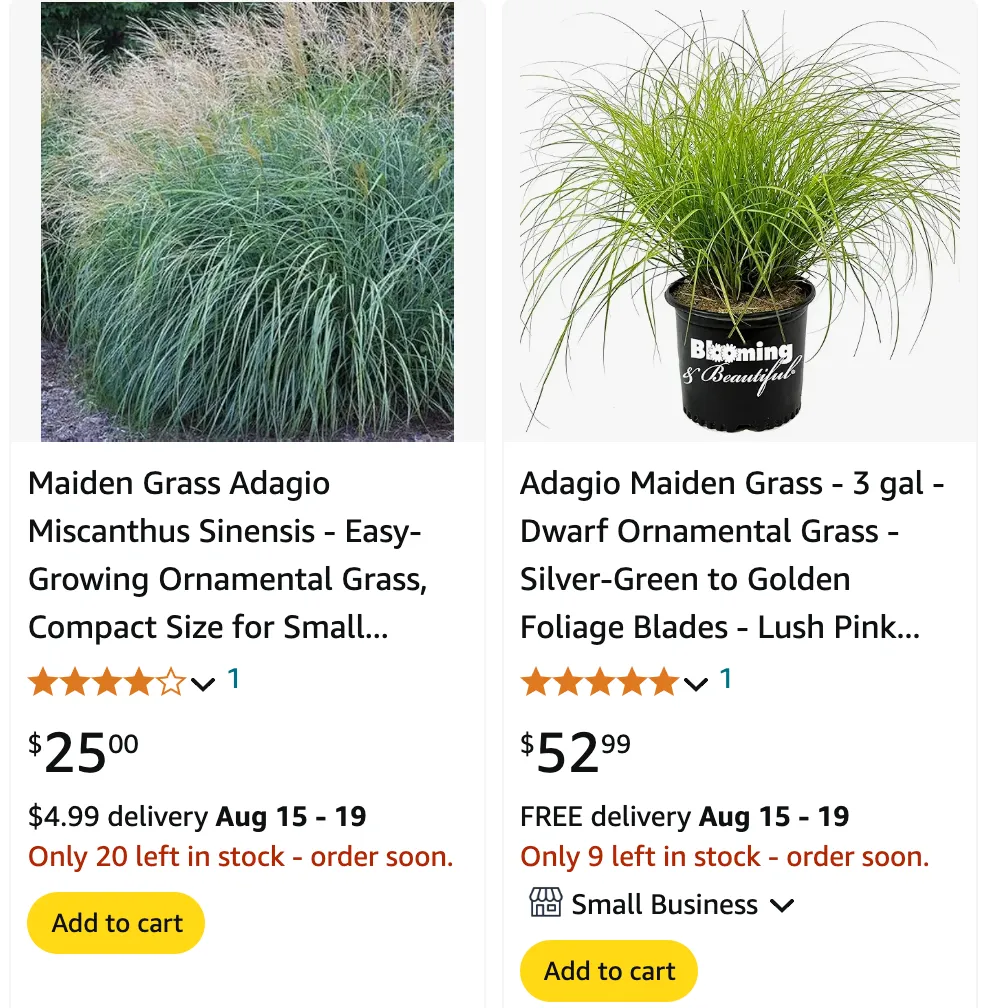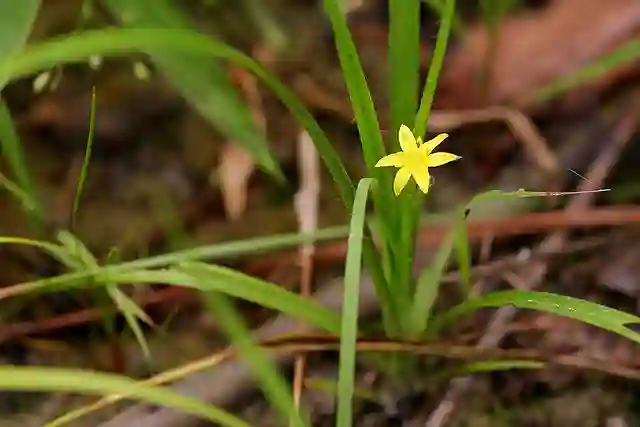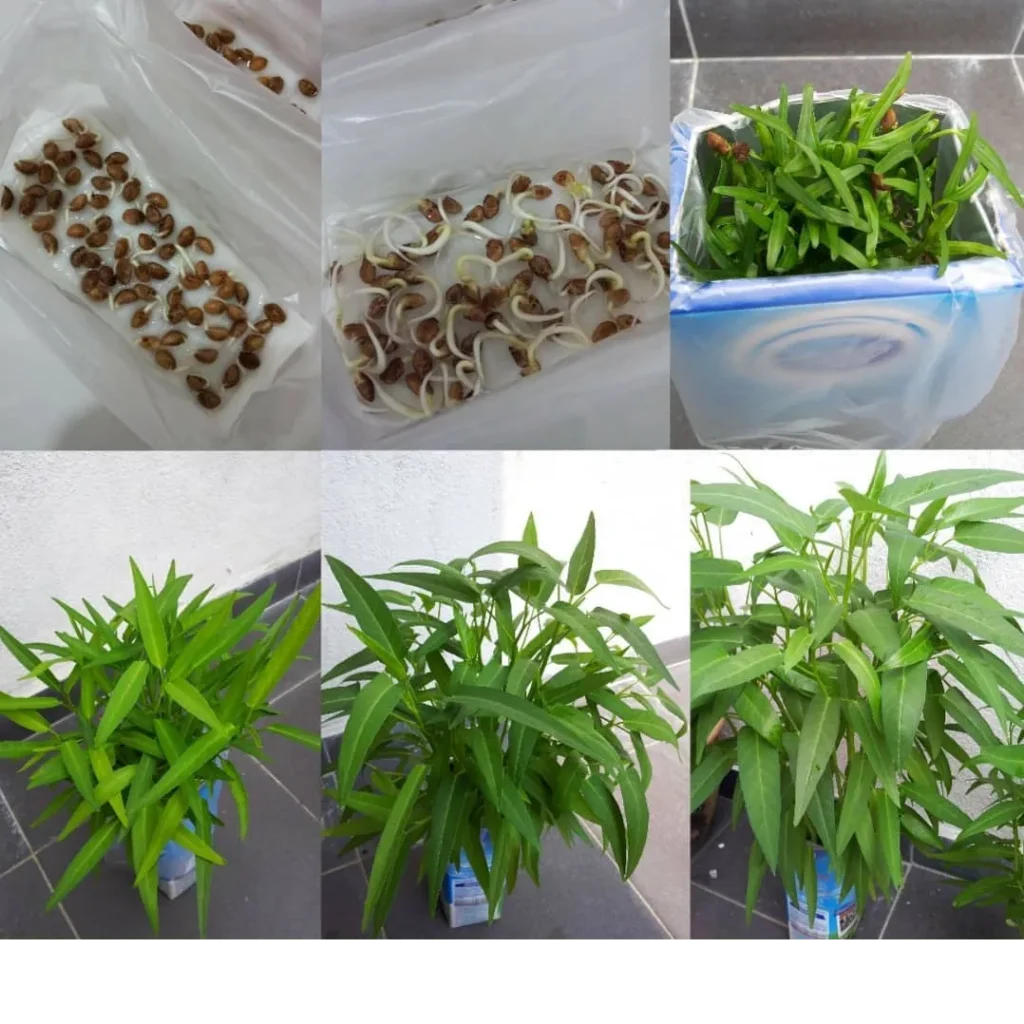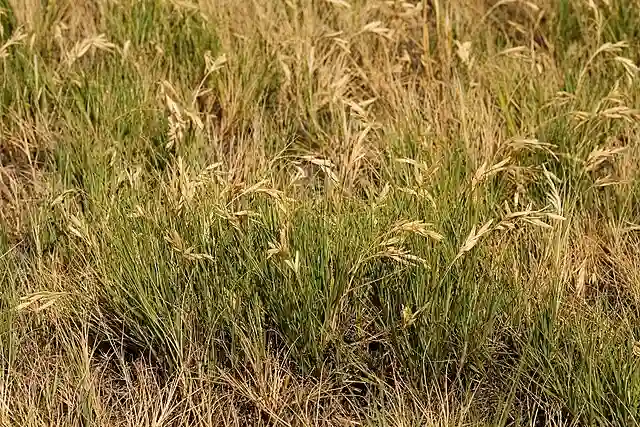
What Is Adagio Eulalia Grass?
Adagio Eulalia Grass, also known as Miscanthus sinensis ‘Adagio’, is a compact, ornamental grass that brings a touch of elegance to any landscape. I love how its fine-textured, silver-green blades sway gracefully in the breeze, creating a calming effect in the garden. This grass is a dwarf variety of the Miscanthus species, typically reaching about 3 to 4 feet in height. In late summer, it produces beautiful, airy plumes that transition from pinkish hues to silvery white, providing year-round interest.
How to Care for Adagio Eulalia Grass?
Caring for Adagio Eulalia Grass is straightforward, which is why it’s one of my favorite low-maintenance plants. Here are some key care tips:
Sunlight Needs
Adagio Eulalia Grass thrives in full sun, needing at least 6 hours of direct sunlight daily. While it can tolerate partial shade, too much shade will cause it to become leggy and reduce flowering.
Watering
This grass is drought-tolerant once established, but regular watering is essential during the first growing season to help it develop a deep root system. After that, I usually water it deeply once a week during dry spells, but avoid overwatering, as it prefers well-drained soil.
Soil Requirements
Adagio Eulalia Grass isn’t picky about soil type, but it does best in well-drained, slightly acidic to neutral soil. I’ve found that adding organic matter to the soil before planting improves its growth and vigor.
Pruning
In late winter or early spring, I prune Adagio Eulalia Grass down to about 6 inches from the ground. This helps remove the old foliage and makes way for new growth. Be sure to wear gloves when pruning, as the blades can be sharp.
How to Propagate Adagio Eulalia Grass?
Propagating Adagio Eulalia Grass is best done through division. I usually divide the clumps in early spring when the new growth begins. Here’s how I do it:
- Dig Up the Plant: I carefully dig around the base of the plant, ensuring I get as much of the root system as possible.
- Divide the Clump: Using a sharp spade or knife, I divide the clump into smaller sections, each with several healthy shoots and roots.
- Replant: I immediately replant the divisions in a prepared bed, making sure to water them well to help them establish.
What to Plant with Adagio Eulalia Grass?
Adagio Eulalia Grass pairs beautifully with a variety of other plants. I enjoy experimenting with different combinations to create visually appealing landscapes. Some of my favorite companions include:
- Coneflowers (Echinacea): Their bold, bright blooms contrast nicely with the soft texture of the grass.
- Russian Sage (Perovskia atriplicifolia): The silvery foliage and lavender-blue flowers of Russian Sage complement the grass’s plumes.
- Black-Eyed Susans (Rudbeckia): These vibrant yellow flowers create a stunning contrast with the grass’s airy texture.
- Sedum (Stonecrop): Sedum’s fleshy leaves and late-season blooms add texture and color to the garden bed.
Can Adagio Eulalia Grass Be Grown in Containers?
Yes, Adagio Eulalia Grass can be grown in containers, although I find it best suited for large pots due to its size. When growing it in a container, I use a well-draining potting mix and ensure the container has good drainage holes. Watering needs are more frequent than in the ground, especially during hot weather. I also recommend placing the container in a sunny spot to keep the grass looking its best.
How to Overwinter Adagio Eulalia Grass?
Adagio Eulalia Grass is hardy in USDA zones 5-9, meaning it can survive winter temperatures in these regions without much fuss. In colder zones, I add a layer of mulch around the base of the plant in late fall to protect the roots from freezing temperatures. If grown in containers, I move the pots to a sheltered location or wrap them with insulation to prevent root damage.
Why Is Adagio Eulalia Grass Not Blooming?
If Adagio Eulalia Grass isn’t blooming, several factors could be at play. Here’s what I usually check:
- Light Levels: Insufficient sunlight is the most common reason for lack of blooms. I ensure the plant gets plenty of direct sunlight.
- Age of the Plant: Young plants may take a couple of seasons to mature before blooming. Patience is key here.
- Overfertilization: Too much nitrogen can promote foliage growth at the expense of blooms. I recommend using a balanced fertilizer and following the manufacturer’s instructions.
Is Adagio Eulalia Grass Deer-Resistant?
Yes, Adagio Eulalia Grass is generally deer-resistant, which is a significant plus in areas where deer browsing is a concern. The tough, fibrous leaves are not palatable to deer, making this grass an excellent choice for gardens in deer-prone areas.
What Pests and Diseases Affect Adagio Eulalia Grass?
Adagio Eulalia Grass is relatively pest and disease-free, another reason I love growing it. However, in poorly drained soils, it may be susceptible to root rot. Keeping the soil well-drained and avoiding overwatering are the best preventive measures. Occasionally, I’ve noticed aphids on new shoots, but these can be easily controlled with a strong spray of water or insecticidal soap.
How Fast Does Adagio Eulalia Grass Grow?
Adagio Eulalia Grass is a moderately fast grower. In the right conditions, it can reach its full height within a single growing season. I’ve found that with regular watering and full sun exposure, it quickly establishes and fills in, making it an excellent choice for creating privacy screens or filling large garden spaces.
Conclusion
Adagio Eulalia Grass is a versatile, low-maintenance ornamental grass that adds texture, movement, and seasonal interest to any garden. Whether you’re looking to fill a garden bed, create a focal point, or find a hardy plant that can withstand a range of conditions, Adagio Eulalia Grass is an excellent choice. I’ve enjoyed growing and caring for this grass in my garden, and I highly recommend it to anyone looking to add a touch of elegance to their outdoor space.
If i die, water my plants!



